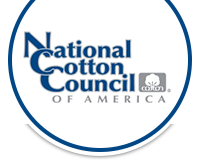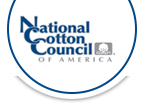November 3, 2009
Contact:
Marjory Walker
(901) 274-9030
“The Sixth Circuit reversed over 30 years of precedent by using an unorthodox rationale that substituted its reasoning for the EPA’s informed decision-making,” NCC Chairman Jay Hardwick said. “The regulation that was struck down exempted certain pesticide applications from the Clean Water Act’s NPDES permit requirement if the application was made in accordance with the FIFRA label provisions.”
The Sixth Circuit’s erroneous opinion instead requires many producers to obtain an NPDES permit in order to apply pesticides in, above, or even near many waterways. The permit subjects the producer or health official to ineffective and burdensome regulation, as well as potential civil lawsuits. The EPA estimates that the ruling affects 365,000 pesticide applicators that perform roughly 5.6 million pesticide applications annually.
“It’s important that the Courts decide this issue correctly,” Hardwick added, “as it has a great impact on our agricultural system as well as our public health. Applicators need to be able to respond to potential pests that could harm crops and carry diseases.”
The Court’s decision creates duplicative regulation over pesticide applicators as they are already subject to FIFRA requirements that were put in place by Congress to govern the applications of pesticides. If the decision is allowed to stand, it could potentially unravel the current Clean Water Act’s agricultural exemptions for storm water runoff and irrigation return flow that have long protected farmers’ rights.
Related News
NCC Statement on MAHA Commission Report The U.S. cotton industry applauds the release of the Make America Healthy Again Commission’s new report, which calls for multi-agency research into the potential human health risks and exposure of microplastics and synthetics, including those from textiles. NCC and NCGA Statement on EPA Action on DEF Systems The National Cotton Council and the National Cotton Ginners Association welcome the U.S. Environmental Protection Agency’s new guidance regarding Diesel Exhaust Fluid systems, as announced by Administrator Lee Zeldin. NCC Expresses Disappointment with Dicamba Ruling The NCC is extremely disappointed in a ruling by the Arizona Federal court that vacates the label for over-the-top use of dicamba products for the 2024 crop.|
News Release Archives |

